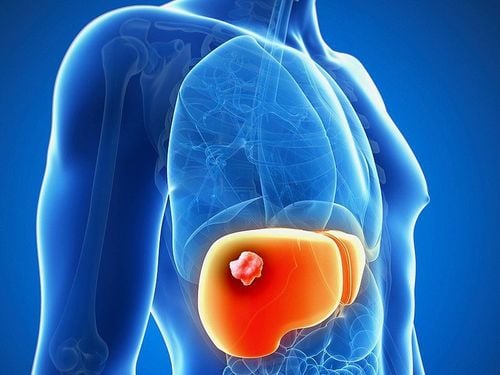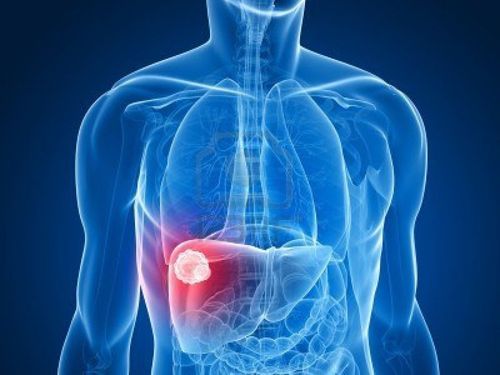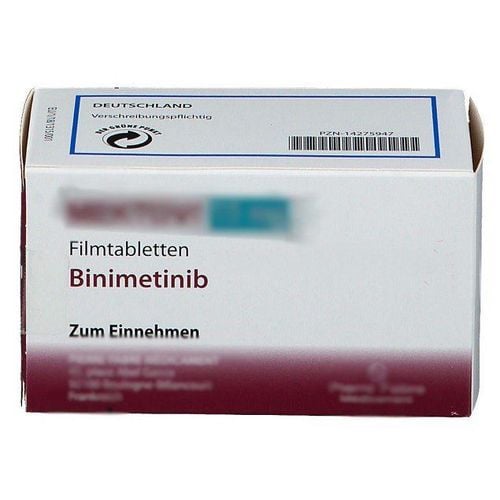This is an automatically translated article.
Liver tumors are divided into 2 types, which can be benign or malignant with different characteristics. Primary hepatocellular carcinoma is usually a tumor rich in blood vessels, which supply blood from the hepatic artery. In addition, there are other types of tumors rich in vessels such as hemangiomas, neuroendocrine tumors,... One of the methods of treating liver tumors is to destroy the tumor by radiofrequency waves with high safety and low complications. .1. What is radiofrequency ablation?
Radiofrequency ablation (RFA) is a method that uses alternating current to generate heat due to the friction of ions in tissue to destroy tumors in the liver. Accordingly, the surrounding tissue is dried due to frictional heat leading to dehydration of the cells and tumor coagulation necrosis.Radiofrequency ablation is a minimally invasive procedure and can be performed many times with few complications. It is often applied on small liver tumors that cannot be surgically intervened, especially liver disease. patients with tumors less than 3.5 cm. It is an adjunct to chemotherapy and radiation therapy or can also be used as an alternative treatment. RFA can also be performed during open or laparoscopic surgery to address deep-seated lesions that can be destroyed by RFA, so that most of the liver tissue can be preserved.
2. Indicated when to cancel u by high frequency waves?
The indicated cases of tumor destruction by radiofrequency radiofrequency (RFA) include:Treatment of small liver tumors. Cases with no indication for surgery in primary liver tumors. Patients with liver tumors unable to receive general anesthesia or elderly patients unable to undergo surgery. Liver metastases usually originate from colorectal cancer. Treatment of hepatocellular carcinoma with many small lesions and awaiting liver transplantation. Contraindications of radiofrequency ablation procedure include:
Patients with skin disease in the procedure area. Prognosis is less than 6 months. Progressive malignancy. Cirrhosis or severe liver failure. Psychosis. Under 18. Lung disease or severe infection. Lesions larger than 5cm or more than 4 lesions. Tumor located next to major blood vessels, pericardium, diaphragm, or other viscera.
3. Is there any risk in ablation using radiofrequency waves?

Bạn có thể bị sốt nhẹ sau khi thực hiện hủy y bằng sóng cao tần
Mild fever for a few days after the procedure. Bleeding or infection at a low rate. Shoulder pain is short-lived, cholecystitis relieved after a few weeks. Intestinal injury, biliary obstruction or pleural effusion due to thermal injury. Burning syndrome, with flu-like symptoms, appears three to five days later. The risk of damage to organs near the liver such as the gallbladder, bile ducts, diaphragm and intestines with a rate of 3 - 5% Radiofrequency ablation also has limitations on the amount of tumor tissue that can be Removal and limited destruction of tumors are too small to prevent cancer from growing back in other sites in the liver.
To achieve the highest diagnostic and treatment efficiency, Vinmec has equipped the most modern imaging equipment system today, typically the GE Healthcare S9 ultrasound machine with flat transducer, high frequency, HD resolution for clear images. Periodically after 1 - 3 - 6 months, the patient will be re-examined with an endocrinologist and radiologist who has directly performed the procedure for the most accurate and objective assessment results.
Please dial HOTLINE for more information or register for an appointment HERE. Download MyVinmec app to make appointments faster and to manage your bookings easily.













